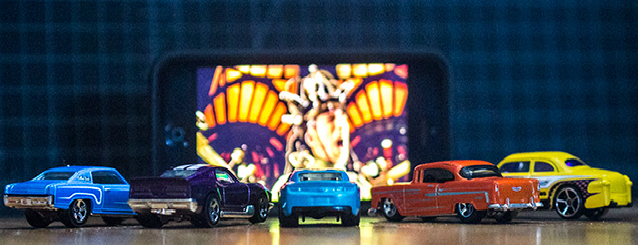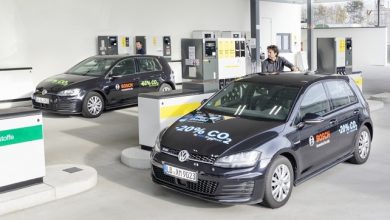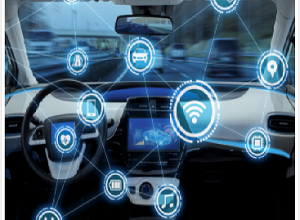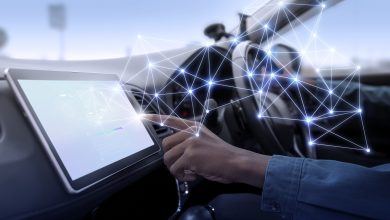Future Cars: All about Internet and Infotainment
“Why are car manufacturer pushing for Internet connectivity and advanced In-vehicle infotainment in their cars? It’s not just another ‘value-added feature’ in the car. It is all about congregation of ever-rising and changing consumer demands and keeping up the pace with the rapid development cycles in the consumer electronics and web industry. The in-car connectivity and infotainment trends are becoming mainstream in every car rolling out from the assembly line and hence the escalating demand. While this is becoming one important purchase factor for the consumers, it is also creating an ocean-full of opportunities for the non-automotive players like telecom, smartphone, software etc.”
According to experts, car industry will evolve and develop a lot more in the next decade owing to the rise in internet connectivity and mobile technology, and ever evolving in-vehicle apps and infotainment systems. The industry is gearing up for the age of ‘autonomous and connected cars’ and consumers and automakers are all set for the manifestation.
If we talk about the entire prospect and look into future and pursuit of cars, it’s all about infotainment systems, connected technology and the internet. The in-car infotainment systems are evolving from purpose-specific devices into connected, upgradeable and integrating platforms.
Consumers are expecting cars, trucks, and other vehicles that are smarter and safer than ever before. Incorporating innovative, interactive infotainment systems, wireless communications technologies, collision avoidance systems and off-course the very essential navigational devices is changing the way cars are designed, manufactured, and used by consumers.
Automakers have been struggling to understand how to transform themselves so that they can serve the demands of consumer and their huge appetite for apps and in-car infotainment. Now, the industry is racing to evolve past basic safety and security features to telematics systems that include natural speech recognition, advanced forms of location-based services, social media integration, multimodal HMIs that respond to hand gestures, and augmented reality windows that promise to not only make driving safer but also engage passengers in the back seat.
Consequently the world is looking for contentment, entertainment and a unique change in driving as well as commuting experience, which they intend to get through the infotainment and connectivity technologies embedded in the cars dashboard itself. Not to mention, Internet, connected tech and electronics are making driving a car much easier and more of a pleasure. Autonomous features, Automatic vision systems and intelligent sensors make it possible for the electronic control unit of the car to override the driver and take full control, if need be. Moreover, internet keeps drivers connected to the outside world.
“The automotive industry is clearly on the edge of a revolution. The public is finally becoming aware of infotainment as something beyond a “GPS”, and this is becoming a factor in purchase decisions. All the OEMs are executing a strategy to bring apps to the car, and a burgeoning number of startups and established non-auto players want in. Smartphone players have gone from a toe in the water to diving in head-first. The industry is being shaken and consumers stand to benefit from it.” – Andy Gryc of CX3 Marketing and Co-Chair, W3C Automotive Business Group for standardizing HTML5 in the vehicle
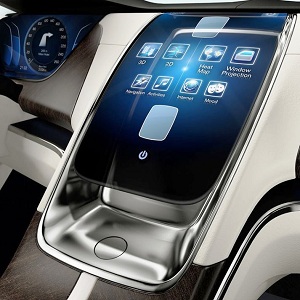 Therefore, looking at the trends we could says that today’s new car buyers are including internet connectivity and in-car infotainment (IVI) systems as a determining factor on what vehicle to purchase. Increasingly, car makers are hearing: “Make the car’s infotainment system look and feel more like my smartphone.”
Therefore, looking at the trends we could says that today’s new car buyers are including internet connectivity and in-car infotainment (IVI) systems as a determining factor on what vehicle to purchase. Increasingly, car makers are hearing: “Make the car’s infotainment system look and feel more like my smartphone.”
In fact, the touch screen of a car is no longer just a tool to check the functioning of the engine or to guide the way to a given destination. Now, it can display familiar apps and programs—the same ones that you have on your smartphone or on your PC at home.
Also, Minimizing driver distractions and improving safety are huge priorities for the industry. To acknowledge the issue, many companies are providing context-aware app to intuitively decrease phone-related text and email distractions while driving like reQall’s reqallable InCar (beta).
“During the course of the day, the average person checks a cell phone approximately 110 times and up to every 6 seconds in the evening! During driving it is hard to break that ingrained habit. reqallable InCar makes use of smart phones in the car safer than current practices of people who use their phones to read emails and text while driving. What we aimed for is a “no glance” experience so that the driver can keep hands on the wheel and eyes on the road. reqallable in-Car puts safety first and helps reduce the distracted driving of current driver behavior.” – reQall’s CEO Rao Machiraju
So, in-vehicle infotainment has advanced and evolved to each and every situate of automotive tech along with concerns such as distracted driving and car hacking. Also, internet and mobile connectivity are a crucial element of today’s as well as future car tech. Therefore the future car tech believes in internet and mobile connectivity, advanced in-vehicle infotainment, superior apps, solid control and above all a distraction free driving with the help of connected car tech 🙂
[show_avatar email=10 show_name=true show_email=true show_biography=true]

